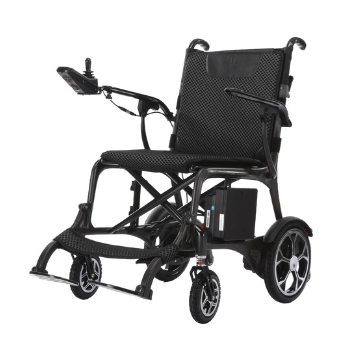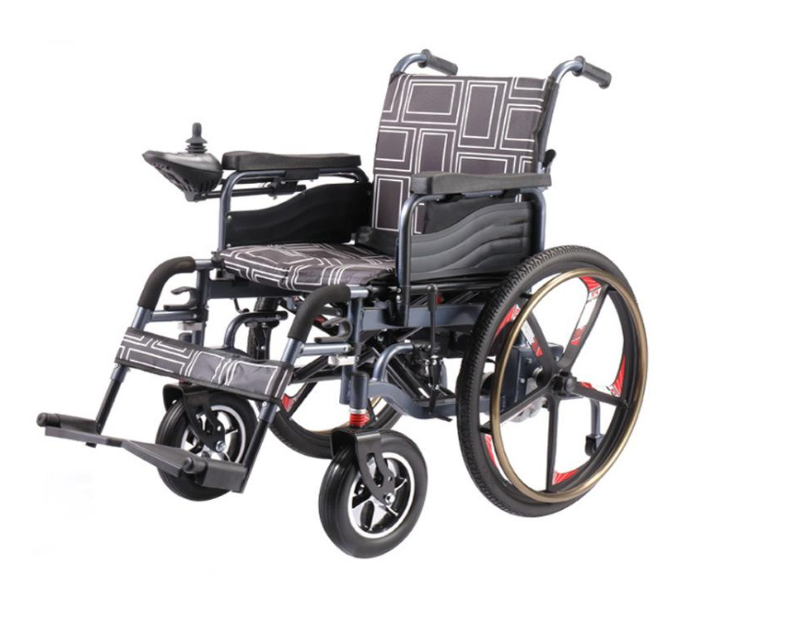Electric wheelchairs have revolutionized mobility for individuals with disabilities, offering both comfort and independence. However, there are times when users may wonder about the manual push capability of these electric devices, especially during situations where battery life may be a concern or when navigating tight spaces. In this blog, we will explore whether electric wheelchairs can be pushed manually and discuss the various factors to consider when it comes to operating them in this manner.
Understanding Electric Wheelchairs
Electric wheelchairs are intricate devices designed to provide mobility for individuals with limited physical capabilities. These chairs are powered by batteries and controlled by a joystick or other electronic controls, allowing users to navigate with ease. These sophisticated mechanisms come equipped with features that enhance both comfort and usability, such as adjustable seating, tilt functions, and even programmable controls for personalized operation.
However, understanding their complex nature is crucial for safe and effective use, especially in situations where electrical assistance may fail or when users require manual mobility options. In scenarios where an electric wheelchair encounters an obstacle, experiences battery depletion, or is in need of maintenance, the ability to push the wheelchair manually becomes vital. Many electric wheelchairs are constructed with a manual freewheel or disengagement feature, enabling caregivers or users themselves to propel the chair without engaging the electric motor.
It’s essential for wheelchair users and their support systems to familiarize themselves with this feature, as it not only provides an alternative mode of movement but also ensures that individuals maintain their independence in various environments, should they find themselves without electrical support.

What is Manual Mode in Electric Wheelchairs?
Manual mode in electric wheelchairs refers to a feature that allows the user or an assistant to push the wheelchair manually when the electronic components are not in use. This mode is especially beneficial in situations where the battery may be depleted, or in circumstances where maneuvering through narrow spaces or steep inclines without relying on electrical power is needed. Many electric wheelchairs are designed with a disengagement mechanism that moves the drive system into a neutral position, enabling the wheels to rotate freely. This functionality ensures that users are not completely dependent on the wheelchair’s electric components and offers greater flexibility in mobility options.
Furthermore, the manual mode can enhance convenience for caregivers who may need to assist individuals in accessing areas that are challenging to navigate using the electric functions. Understanding how to activate and deactivate this mode is crucial for both users and caregivers, as it enhances the usability of electric wheelchairs in various environments.
In addition, the manual push capability adds an extra layer of safety, ensuring that in case of a malfunction or technical issue with the electric drive, users can still maneuver effectively without complete reliance on the battery power or electrical systems.
Benefits of Being Able to Push an Electric Wheelchair Manually
Being able to push an electric wheelchair manually offers several significant benefits that enhance mobility and independence for users. One of the primary advantages is increased flexibility in various environments. In situations where the battery might run low or the terrain becomes too challenging for the electric components, manual pushing allows the user or caregiver to navigate smoothly without being dependent solely on the electric functions.
Additionally, this capability can be vital in emergency situations where power failure may occur, ensuring that the user can still traverse to safety without requiring assistance from others. Moreover, the ability to push an electric wheelchair by hand can contribute positively to the physical health of the user. Engaging in manual propulsion can provide light exercise and help maintain muscle strength, which is essential for individuals with limited mobility.
This interaction not only fosters a sense of empowerment but also encourages social interaction, as users can more easily integrate into various settings, from crowded public spaces to serene outdoor environments. Ultimately, the dual functionality of electric wheelchairs combines advanced technology and practical usability, making them a more versatile mobility solution for those who need it most.
Self-Pushing Design On Your Electric Wheelchair
Some electric wheelchairs also come with designs that are for independant users to engage in the self-pushing mode rather than relying on care givers. These designs usually come with larger rear wheels that has a pushing handle; as well as manual wheel-brakes on top of the electro-magnetic brake. Simply switch the electric mode to manual and utilise the electric wheelchair like a regular one.

Safety Considerations When Pushing an Electric Wheelchair
When considering the manual push of an electric wheelchair, safety should be the foremost priority. Electric wheelchairs are designed primarily for powered mobility, which means that while they can be pushed manually, certain precautions must be observed. Engaging the manual push mode, if available, is crucial to prevent accidental activation of the motor.
Additionally, the weight of the electric wheelchair can be a significant factor; many models are heavier than traditional manual wheelchairs, making them more challenging to maneuver. It’s important for caregivers and users to ensure that they are physically able to navigate the wheelchair safely, particularly on inclines or uneven surfaces where a sudden slip could lead to injury. Anti-tip features, often included in electric wheelchairs, should also be considered when manually pushing, as they can affect balance and stability during operation. Moreover, the stability of the electric wheelchair is affected by the position of the battery and other components, which can shift weight distribution.
Therefore, before attempting to push an electric wheelchair, understanding the specific model’s design and weight distribution will be beneficial. Clear communication between the user and the pusher is essential to ensure a safe experience. Proper coordination can aid in navigating obstacles, encouraging a smooth and secure push that prioritizes safety for both parties involved. Taking these factors into consideration will enhance the overall experience of manually pushing an electric wheelchair, allowing for better mobility without compromising safety.
Comparing Manual Push vs. Electric Operation
When considering the functionalities of an electric wheelchair, one common question arises: can it be pushed manually? Understanding how manual push compares to electric operation is essential for users who might find themselves in situations where electric power is unavailable. An electric wheelchair is designed with a battery-powered motor that assists users in navigating their environment with ease.
However, many models also come equipped with a manual push feature, allowing caregivers or users to push the wheelchair if the battery dies or if the user prefers to conserve energy. This dual functionality can be especially beneficial in crowded areas or during emergencies, where maneuverability is crucial. Moreover, the ease of switching between manual and electric modes can vary significantly between different electric wheelchair models.
Some might offer a seamless transition, while others may require more effort to switch modes. It’s important for users and caregivers to familiarize themselves with the specific model in use to ensure safe and effective operation in both modes. Ultimately, knowing how to utilize the manual push option alongside the electric operation can greatly enhance the versatility and reliability of using an electric wheelchair in everyday life.
Final Thoughts on Manual Pushing of Electric Wheelchairs
In summary, while e-wheelchairs are designed for powered mobility, many models offer the flexibility for manual pushing. This dual capability can be exceptionally beneficial in various scenarios, such as navigating tight spaces, conserving battery life, or when encountering obstacles that may impede electric operation. Users should always consult the manufacturer’s guidelines to ensure safe and efficient use of the manual push feature as wheelchairs can vary significantly in design and functionality.
Additionally, understanding your specific electric wheelchair’s construction and features is key to determining how best to navigate it manually. Consideration should be given to factors such as weight, incline, and general user comfort when engaging in manual pushing. By familiarizing yourself with these aspects, you can enjoy the versatility that e-wheelchairs offer, ultimately enhancing your mobility experience in both powered and manual modes.
Great blog post! This feature is indeed crucial for safe usage of electric wheelchairs, especially in emergency situations.
Hi Zhairina, thank you for sharing your thoughts on the importance of manual push capability in electric wheelchairs. We completely agree with you that this feature is crucial, especially in emergency situations or when users require manual mobility options. At Eko Life, we strive to provide our customers with safe and reliable products, and we’re glad to hear that you found our blog post informative. If you have any further questions or concerns about our electric wheelchairs, please don’t hesitate to contact us at [email protected] or +65 6589 8877.
I completely agree, proper training and knowing how to use the manual push feature can increase the user’s independence and mobility.
That’s a great point, Cina! We couldn’t agree more. At Eko Life, we believe in empowering users to take control of their mobility with knowledge and proper training. If you have any questions about the manual push feature or would like to learn more about our e-wheelchairs, please don’t hesitate to reach out to us at [email protected] or +65 6589 8877.
Safety considerations are paramount when it comes to using electric wheelchairs with manual push capabilities. Users must be mindful of their surroundings and the capabilities of the device.